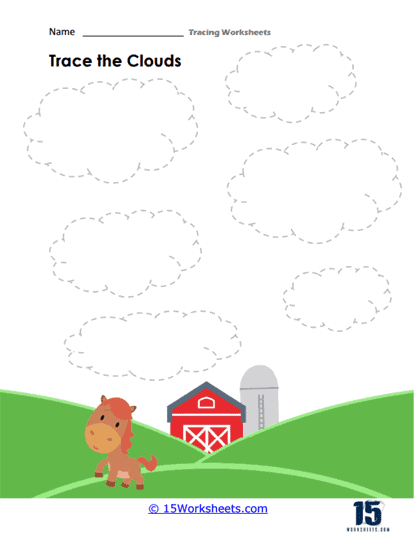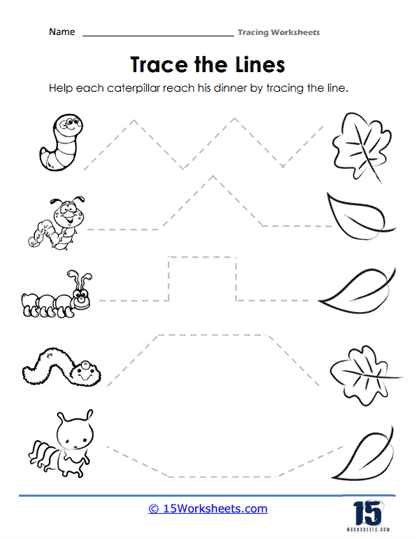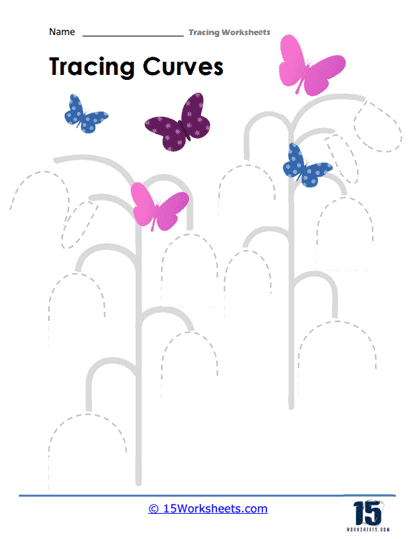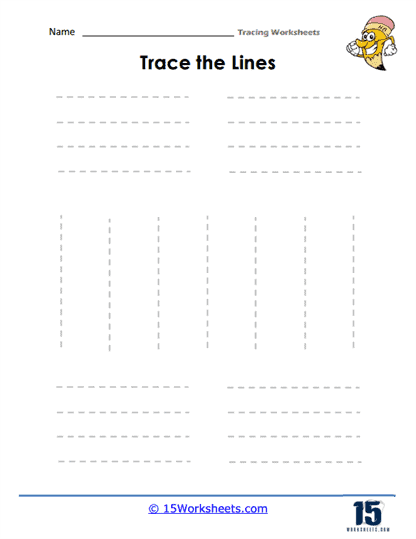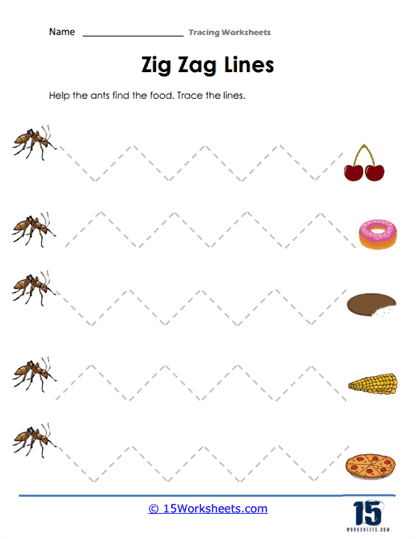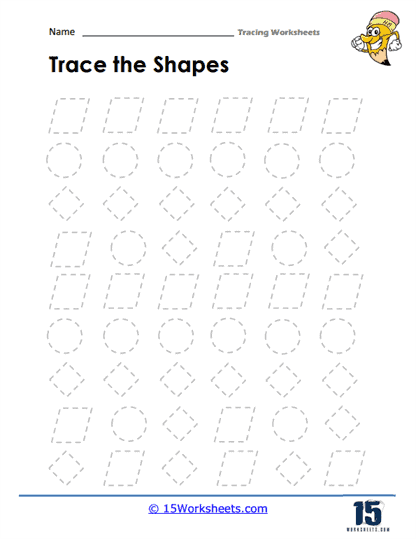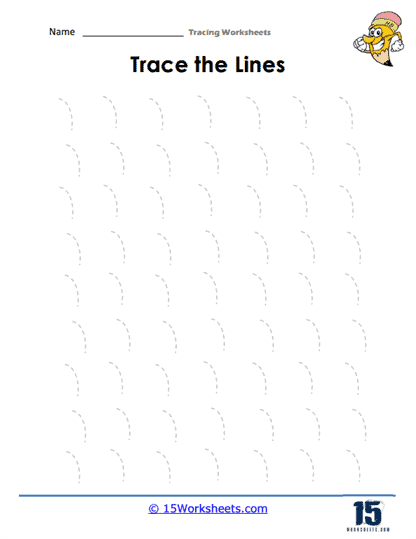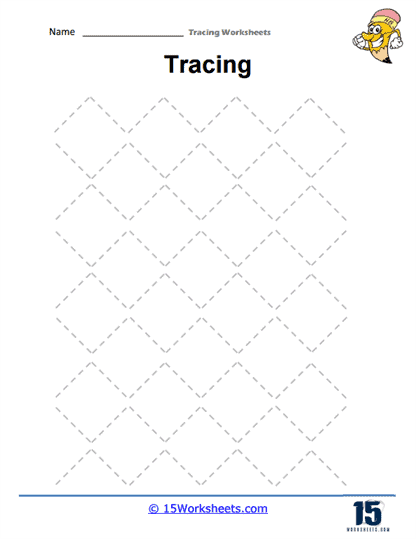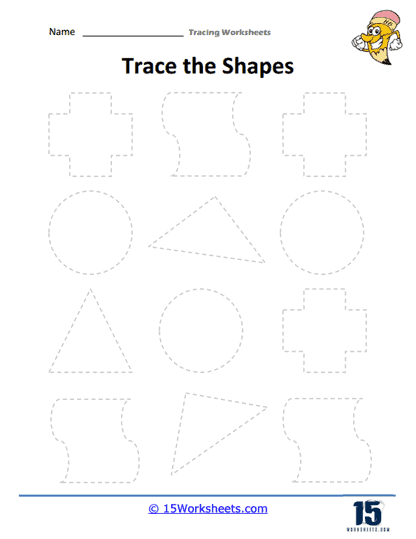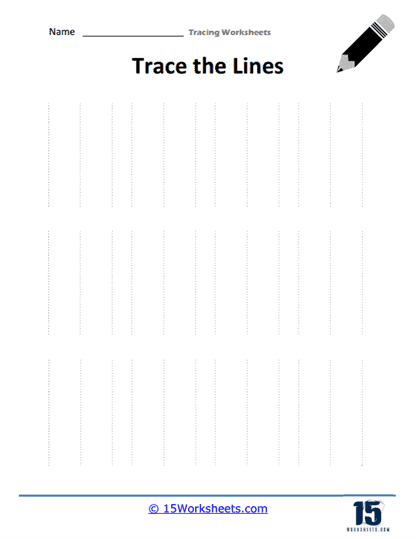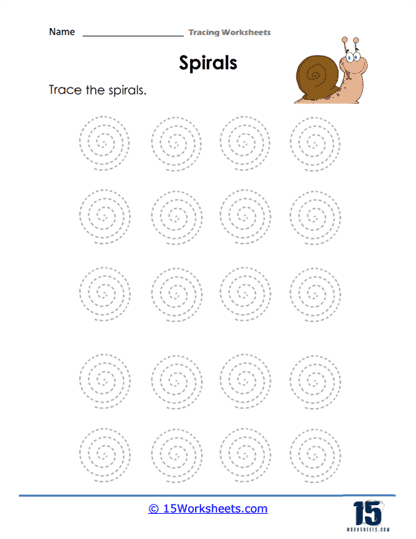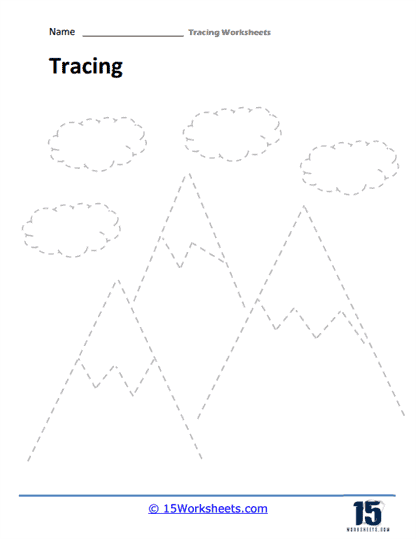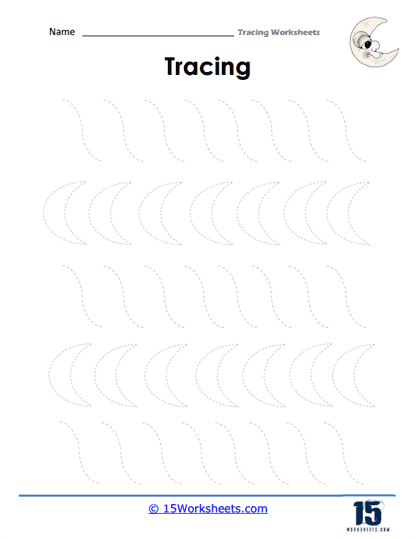Tracing Skills Worksheets
What Are Tracing Skills Worksheets?
Tracing Skills worksheets are educational resources designed to help children develop and practice their fine motor skills, hand-eye coordination, and pre-writing abilities. These worksheets typically include a variety of tracing activities that require children to control their pencil movements to create patterns, shapes, or trace lines and outlines of images.
Some common elements of Tracing Skills worksheets may include:
Lines and Curves – Worksheets may feature straight lines, wavy lines, or simple curves for children to trace, helping them practice basic pencil control and develop foundational pre-writing skills.
Basic Geometric Shapes – Worksheets may include basic geometric shapes, such as circles, squares, triangles, and rectangles, for children to trace and familiarize themselves with.
Objects or Animals – Children can trace outlines of everyday objects, animals, or other familiar items to practice their fine motor skills and hand-eye coordination.
Unique Designs – Worksheets can feature various patterns or designs, such as zigzags, loops, or waves, for children to trace and improve their pencil control. They may also include faint outlines of letters or numbers for children to trace, helping them become familiar with their shapes and improve their handwriting skills.
Connect the Dots – Worksheets might also incorporate dot-to-dot activities, where children connect numbered or lettered dots in sequence to create an image, reinforcing number and letter recognition.
Tracing Skills worksheets can be used in various settings, such as classrooms, therapy sessions, or at home, and can be adapted to suit different age groups and developmental levels. These worksheets help children develop essential fine motor skills, hand-eye coordination, and pre-writing abilities, which are crucial for success in writing, drawing, and other activities that require precise hand movements.
Why Is Tracing Important for Preschoolers?
How quickly a student is able to learn something is majorly credited to how well a teacher can teach it.
When a teacher is required to teach young preschoolers how to develop the mechanical skills required to use a pencil to learn how to
write and draw, tracing can be an extremely helpful tool.
Some benefits that come from teaching preschoolers how to trace are as follows:
Fine motor skills development: Tracing helps improve the fine motor skills required for controlling the small muscles in the hands and fingers. These skills are crucial for tasks like holding a pencil, writing, drawing, and manipulating objects.
Hand-eye coordination: Tracing activities involve the simultaneous use of hand movements and visual perception, which enhances hand-eye coordination. This coordination is necessary for various daily activities and learning tasks.
Pre-writing skills: Tracing shapes, lines, and letters provides preschoolers with an introduction to writing. It helps them understand the formation of letters and numbers, which eventually prepares them for writing independently.
Spatial awareness: As children trace various shapes and lines, they develop an understanding of spatial relationships and learn how to properly position and orient their writing tools.
Focus and concentration: Tracing activities require attention to detail and precision, which helps preschoolers develop their focus and concentration skills.
Confidence building: As children successfully trace shapes and letters, they gain confidence in their abilities, encouraging them to take on more complex tasks in the future.
Creativity: Tracing can serve as a stepping stone for children to explore their creativity through drawing, coloring, and other artistic activities.
While it may seem like an easy job, teaching preschoolers can be extremely challenging. The main reason behind this is that young children lack focus and are easily distracted.
Hence, if you ask your young preschooler to draw a circle without any help, chances are they might get distracted midway and may fail to recall the task assigned to them.
However, if the teacher has already traced out a dotted circle on the paper beforehand, the preschooler will be able to maintain their focus by looking directly at the dotted shape, and will also be able to recall their assigned task even when they get distracted.
This focus becomes incredibly helpful throughout the child’s learning at both the school and at home.
Moreover, young children lack the muscle control needed to hold a pencil properly and use it on a piece of paper.
If the teacher has already traced out some alphabets, the child will be able to follow the dots, one after the other, to write the complete alphabet. This practice will greatly improve the child’s muscle control, motor skills, and coordination.
Tracing Helps Encourage the Preschoolers to Practice Counting
Apart from learning how to write properly, preschoolers also need a lot of teaching when it comes to learning how to count.
One excellent way of encouraging preschoolers to practice counting is by making them trace an alphabet, a number, or a shape.
For instance, if you trace out a square by putting four dots on the paper, you can ask the child to count each dot that they connect.
As a result, the preschooler will not only be able to draw the shape, but will also get a chance to practice counting till four.
Another trick is to trace out a more complex drawing, such as an apple, by numbering the dots. Then ask the preschooler to connect the dots by drawing a line between the subsequent numbers.
This activity will help the preschooler practice how to count the dots, while also helping them memorize number counting.
Tracing Can Help with Memory Retention
One incredible benefit that comes from learning how to trace on dotted figures is that preschoolers are able to memorize what they write.
For instance, if you trace out the number seven multiple times on a paper, the preschooler will have to count and focus on connecting the dots correctly each time.
Eventually, this activity will help them memorize how the digit seven is written.

